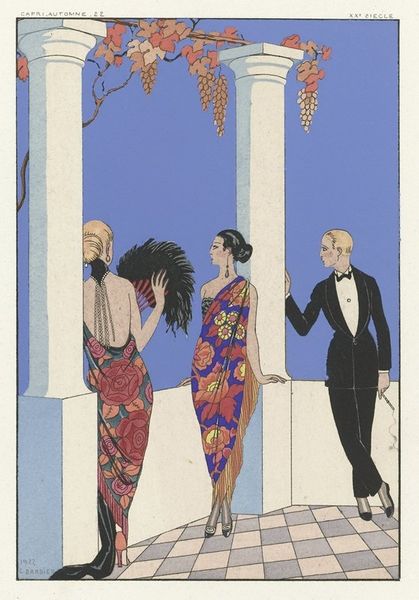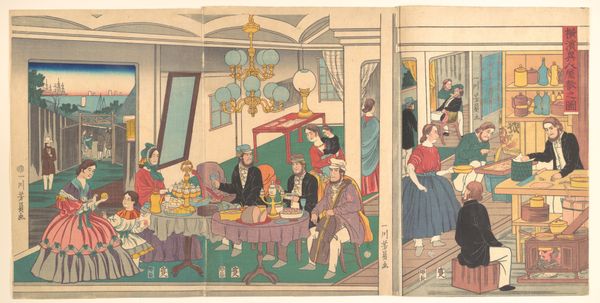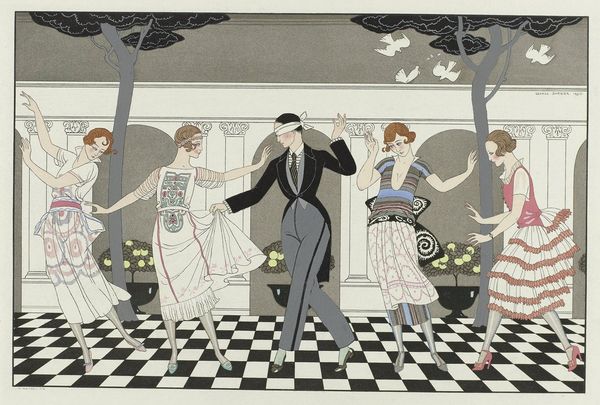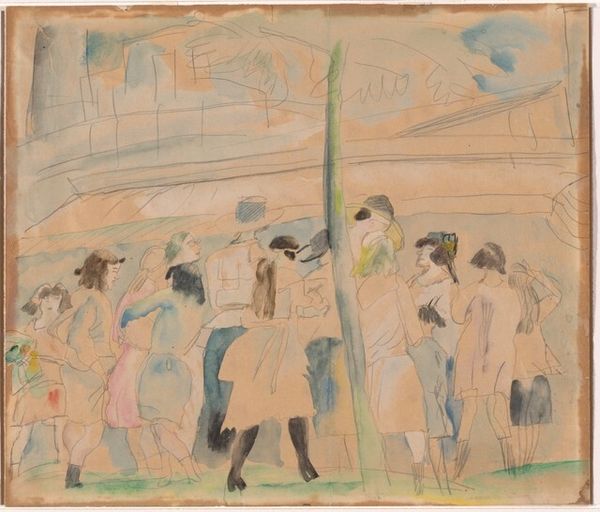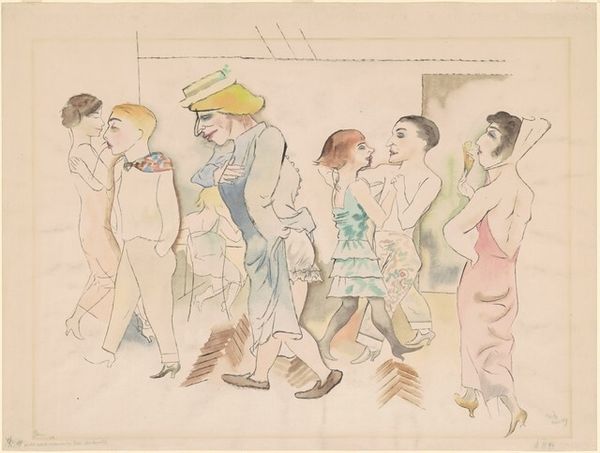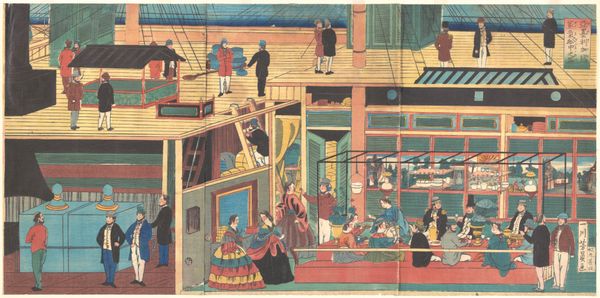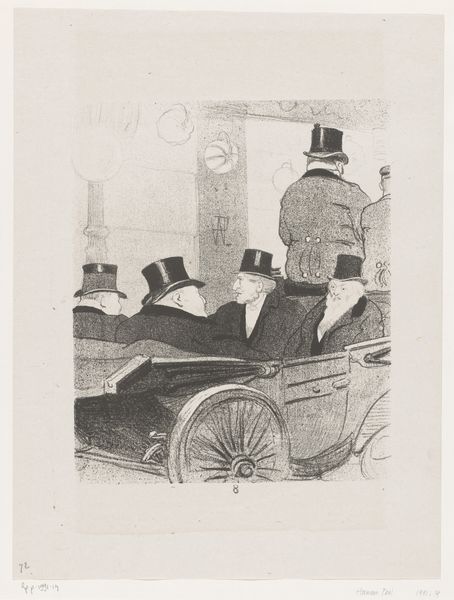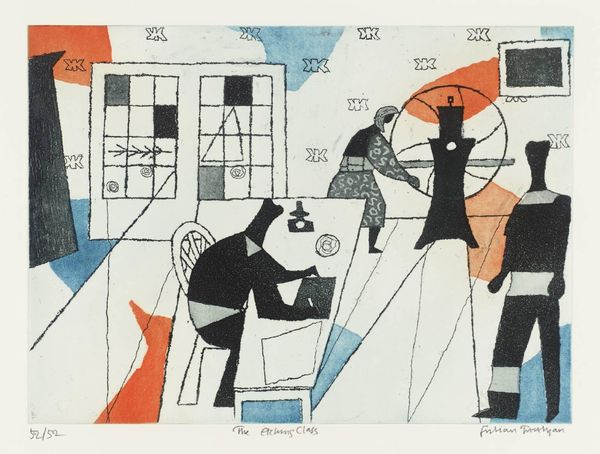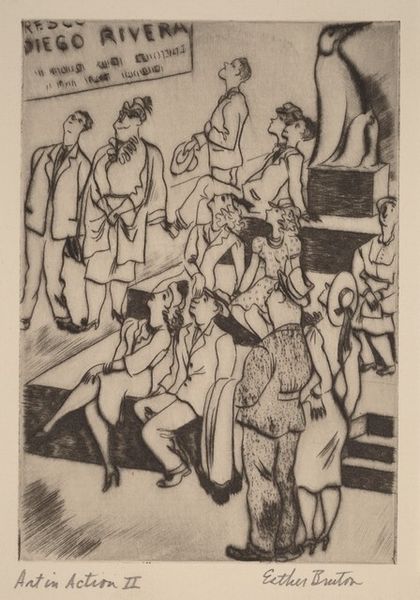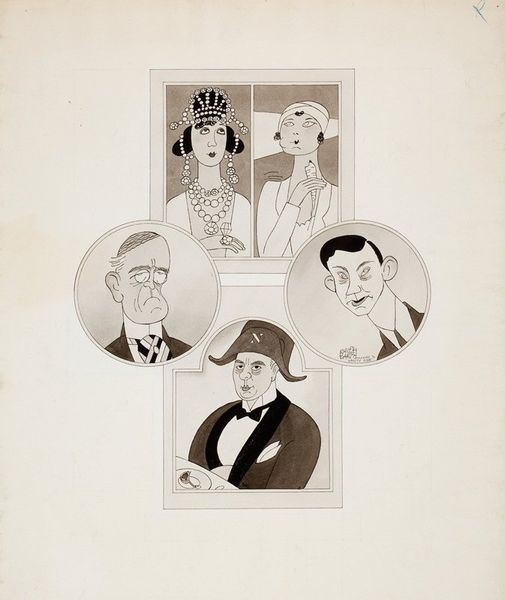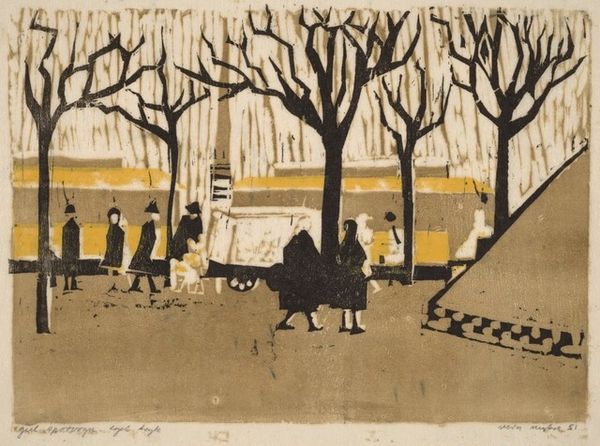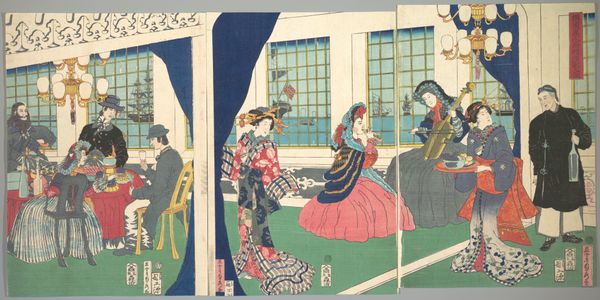
drawing, paper, ink
#
art-deco
#
drawing
#
paper
#
ink
#
cityscape
#
watercolour illustration
Copyright: Public Domain: Artvee
Curator: Immediately, this evokes a sense of elegant melancholy, doesn’t it? Like a jazz record playing softly at dawn. Editor: Exactly! We’re looking at "Au Revoir," a 1924 ink and watercolour drawing on paper by George Barbier, a leading figure in the Art Deco movement. It’s a scene brimming with the glamour and fleeting pleasures of the Roaring Twenties. Curator: The figures are stylized, almost like porcelain dolls posed on a stage. There's a stillness about them, a detachment, despite all the finery and implied revelry. And that colour palette…so muted, yet luxurious. Editor: Barbier's work frequently graced the covers of magazines like Vogue and Gazette du Bon Ton, solidifying his role in shaping the visual culture of the era. This piece really showcases his keen eye for fashion and social dynamics. Curator: That car! It’s like a futuristic chariot, carrying away secrets and promises into the night. I wonder, is it a genuine farewell, or simply a dramatic pause before the next act? Editor: Think about the socio-economic context here. The insatiable appetite for luxury goods, leisure, and fast-paced social life amongst the wealthy elite defined that decade. Pieces such as Barbier’s “Au Revoir”, showcased that new attitude perfectly, while capturing the sentiment towards an older world destroyed during WW1. Curator: Maybe the drawing also portrays the societal impact of war, with everyone just escaping the shadows of reality while being consumed by a constant need to celebrate life. Barbier could be hinting at something much deeper beneath the glittering surface of prosperity, what do you think? Editor: Indeed. Looking closely at this image allows for exploration of a broader cultural discourse about escapism and societal transformation. The art deco period’s bold modernity was equally embraced as a way to ignore and dismiss a wounded and shattered pre-war culture, at least in the West. Curator: Well, now, I find myself contemplating my own 'au revoirs,' the moments of bittersweet beauty that define our journeys. It seems art can echo through generations. Editor: Absolutely, it gives one plenty to ponder concerning how past echoes influence modern sentiments.
Comments
No comments
Be the first to comment and join the conversation on the ultimate creative platform.
